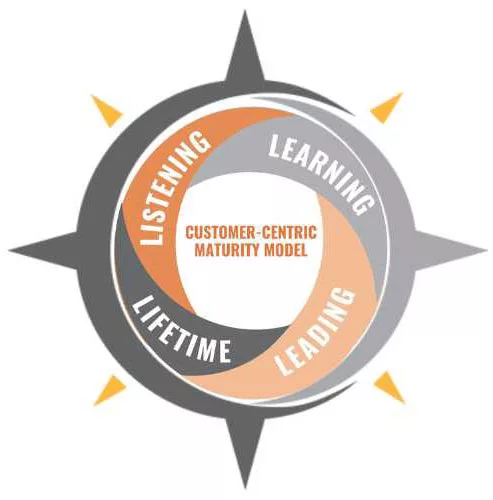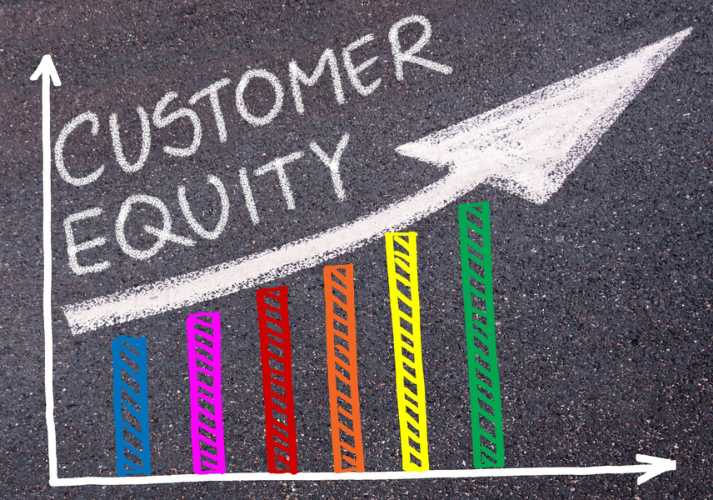The true North Star of growth is customer equity.
Brands need to evolve to achieve customer equity. Customer equity represents the value that current and future potential customers will provide to a company during the entire lifespan of their relationship. It creates real dollar value for companies.
In the customer-centric maturity model, setting the North Star and the compass to focus on Listening, Learning, Leading, and Lifetime (value) to grow is critical.
Let’s look at the points of the compass individually…

Listening
Optimizing the customer journey. Do you have the right tools to capture and analyze data from all your channels? More importantly, are you using that data? The voice of the customer is powerful. Listening is about collecting feedback and acting on it to improve service and product offerings. One must ensure that customer needs and expectations are at the forefront of business decisions.
Learning
Perfecting the direct-to-consumer model. Do you have processes in place to translate your data findings into action items to enhance the customer journey? It is crucial that your action plan includes a philosophical change from quantity to quality marketing. This approach helps you adapt to evolving market trends and align products with consumer expectations.
Leading
Scaling the brand story through content creation. How you tell your story is just as important as the story itself, and the message must be consistent across channels and permeate all levels of your organization. Your leadership team must align on metrics that align with strategy and be willing to measure performance against them regularly. Effective leadership in storytelling involves engaging and inspiring stakeholders. By effectively communicating company goals, leadership creates a shared vision that motivates employees and attracts customers.
Lifetime (value) – Monetize loyalty by following your customer

Let’s look at the similarities and differences between brand equity and customer equity.
Similarities
Both brand equity and customer equity focus on customer loyalty and its significance. Both show that having many customers who would pay the highest possible price determines a brand’s value.
Both concepts contribute significantly to the overall strength and sustainability of a brand. A strong brand equity suggests a good reputation and high customer satisfaction.
Brand equity and customer equity both influence strategic business decisions. Understanding the value and loyalty of customers through these lenses guides companies in making informed choices that can lead to long-term success.
Difference Between Brand Equity and Customer Equity
Brand equity looks at the strategic issues around managing a brand. Customer equity’s main concern is the financial value that the brand gets from its customers.
Customer equity is a much broader alternative, as it can often ignore a brand’s optional value. On a much larger scale, it affects revenue and costs, and not just within the marketing environment.
Impact on Long-term Brand Strategy
Brand equity focuses on building and maintaining a strong, recognizable brand. A brand that commands loyalty and premium pricing over time. It encircles elements like brand visibility, customer perception, and competitive positioning. The strategic focus helps build a brand’s identity and reputation, allowing long-term success.
Direct Connection to Customer Behaviors
Customer equity directly affects customer behavior and the brand’s lifetime value. It evaluates the profitability of different customer groups with a target to increase profits by using customized marketing strategies and managing customer relationships effectively. It allows for a dynamic and responsive marketing strategy that alters customer preferences and market conditions.
These two terms are not interdependent. One can exist without the other. Customers may love Domino’s and Little Caesar’s but prefer to order pizza only from Domino’s.
So, there it is… brands are nothing without their consumers, and vice versa.
Let me help you maximize the lifetime value of your customers.






